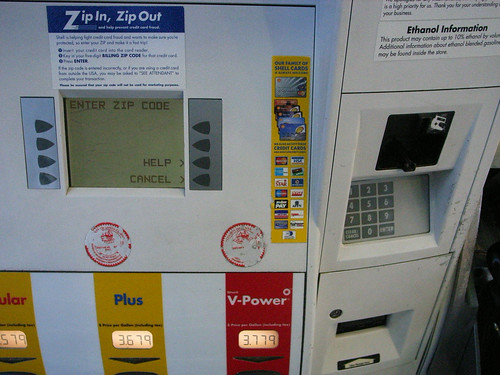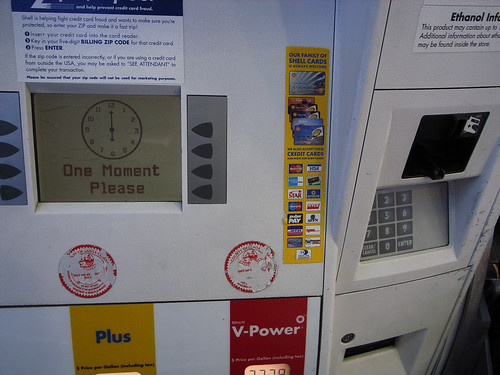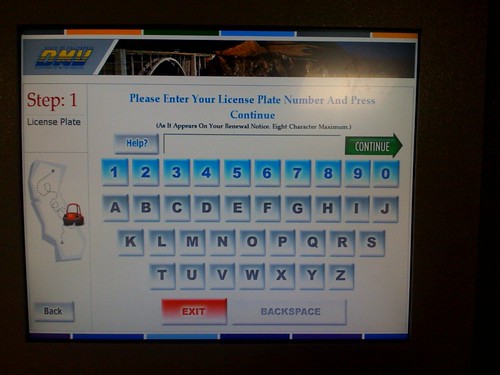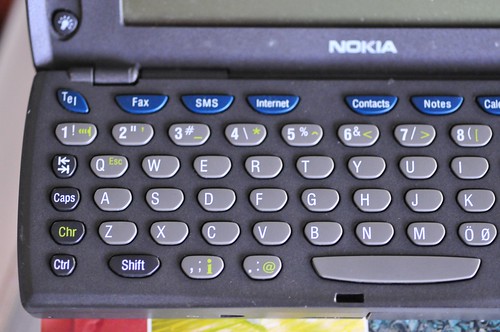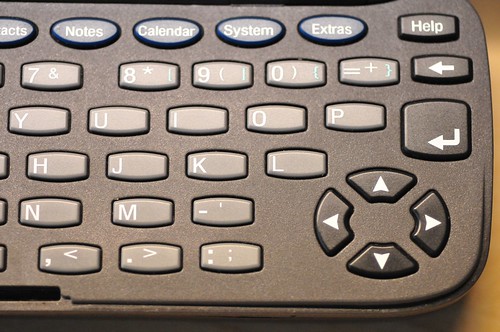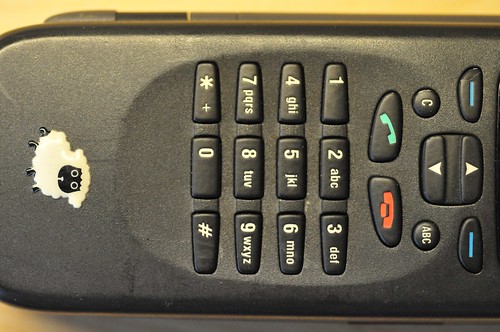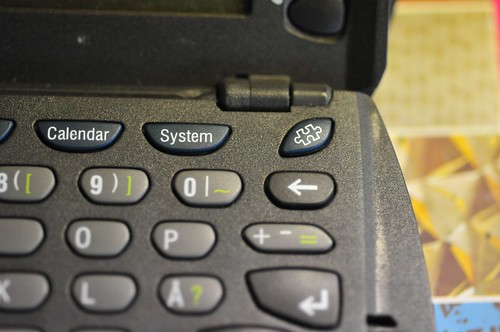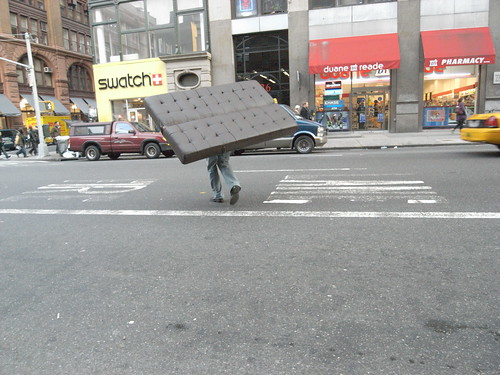Seen just south of San Jose, California, another curious pragmatic interface that allows me to use my speedy, trusty debit card to complete a transaction without cash, but with a little dose of poor interaction design. After swiping my card, for security purposes (presumably) I must enter my postal zip code. So I can “Zip In, Zip Out.” This is all good stuff. If I were a thief who was a bit of a bungler, I might have swiped someone’s card and attempt to use it, but be stymied if I didn’t have the foresight to get their zip code, such as would likely be found on their drivers license, which is probably also in the wallet I just stole, or found, or whatever. So, I may have a consequential hurdle to charging up a $50 or $60 tank of gas. But the bigger hurdle might be searching for the obvious place to enter the zip code which is, of course, on the panel over around the little articulation in the otherwise flat-front of the pump. Now, this is nit-picky. Anyone would figure this out, that the entry point for numbers and such all is over on the number pad. But, I mean..why is it there and not as any considered design would place it — below or at least beside the display? And why, in a “Zip In, Zip Out” interaction should a “wait just a moment..” wait..wait..wait..clock appear at all? Even if it does take time to transact and validate, some other sort of graphic idiom that suggests zippiness seems like it would be more in keeping with the principle of fast service here.
Sigh.
Why do I blog this? Another in the continuing stream of design observations of failures, successes and imperfections to be considered.
Continue reading Zip In, Reach Over, Zip Out
